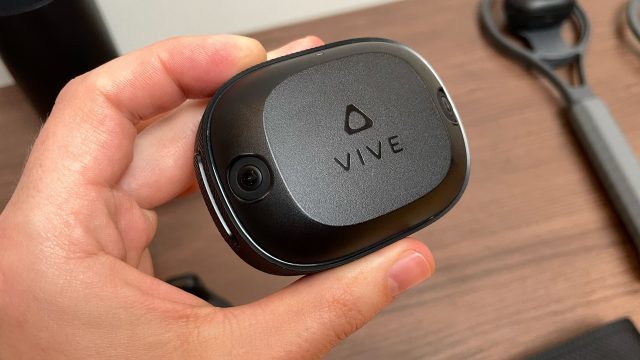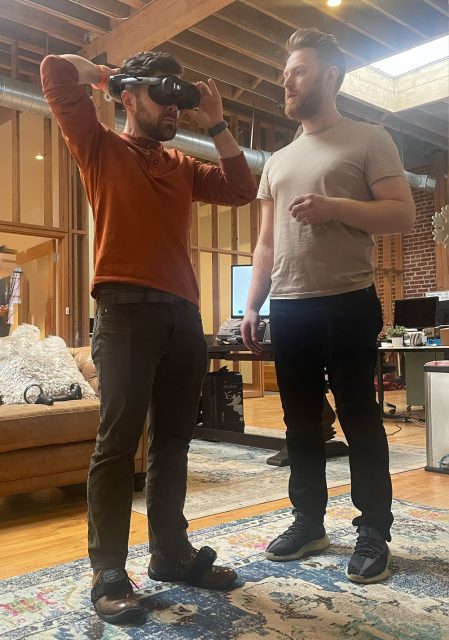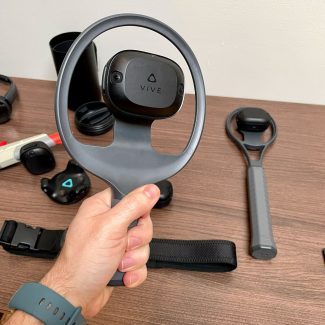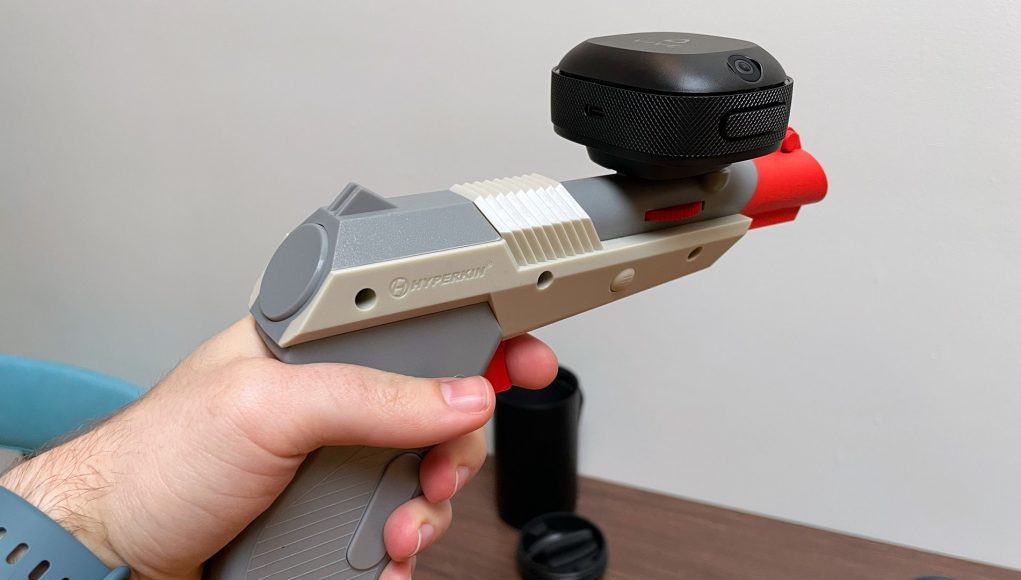With three versions of SteamVR trackers under its belt, HTC has been a leading enabler of full-body tracking in VR. Now the company’s latest tracker could make it even easier to bring your body into VR.
HTC’s new standalone Vive tracker (still unnamed) has a straightforward goal: work like the company’s existing trackers, but easier and on more platforms.
The ‘easier’ part comes thanks to inside-out tracking—using on-board cameras to allow the device to track its own position, rather than external beacons like those used by the company’s prior trackers.

To that end, things seem really promising so far. I got to demo the new Vive tracker at GDC 2023 this week and was impressed with how well everything went.

With two of the new Vive trackers strapped to my feet, I donned a Vive XR Elite headset and jumped into a soccer game. When I looked down at my feet, I saw a pair of virtual soccer shoes. And when I moved my feet in real-life, the soccer shoes moved at the same time. It took less than two seconds for my mind to say ‘hey those are my feet!’, and that’s a testament to both the accuracy and latency being very solid with the new tracker.
That’s not a big deal for older trackers that use SteamVR Tracking, which has long been considered the gold standard for VR tracking. But to replicate a similar level of performance in a completely self-contained device that’s small and robust enough to be worn on your feet… that’s a big deal for those who crave the added immersion that comes with bringing more of your body into VR.
Throughout the course of my demo, my feet were always where I expected to see them. I saw no strange spasms or freezing in place, no desync of coordinate planes between the tracker and the headset, and no drifting of the angle of my feet. That allowed me to easily forget that I was wearing anything special on my feet and simply focus on tracking to kick soccer balls into a goal.
While the tracker worked well throughout, the demo had an odd caveat—I had feet but no legs! That makes it kind of weird to try to juggle a soccer ball when you expect to be able to use your shin as a backboard but watch as the ball rolls right over your virtual foot.
Ostensibly this is the very thing that trackers like this should be able to fix; by attaching two more trackers to my knees, I should be able to have a nearly complete representation of my leg movements in VR, making experiences like ‘soccer in VR’ possible when they simply wouldn’t work otherwise.
I’m not sure if the demo app simply wasn’t designed to handle additional tracking points on the knees, or if the trackers are currently limited to just two, but HTC has confirmed the final inside-out Vive tracker will support up to five trackers in addition to the tracked headset and controllers.

So the inside-out factor is the ‘easier’ part, but what about the other goal of the tracker—to be available on more platforms than just SteamVR Tracking?
Well, the demo I was playing was actually running purely on the standalone Vive XR Elite. To connect the trackers, a small USB-C dongle needs to be connected to the headset to facilitate the proprietary wireless connection between the dongle and the trackers. HTC says the same dongle can plug into a PC and the trackers will work just fine through SteamVR.
The company also says it’s committed to making the trackers OpenXR compatible, which means (in theory) any headset could support them if they wanted.
– – — – –
I only got to use it in one configuration (on my feet) and in one environment (a large office space). So there’s still the question of how robust they will be. For now though, I’m suitably impressed.
If these trackers really work as well as they seem from their first impression, it could open the door to a new wave of people experiencing the added immersion of full-body tracking in VR… but there’s still the lingering question of price, which historically never seems to be quite right consumer VR market when it comes to HTC. Until then, our fingers shall remain crossed.







